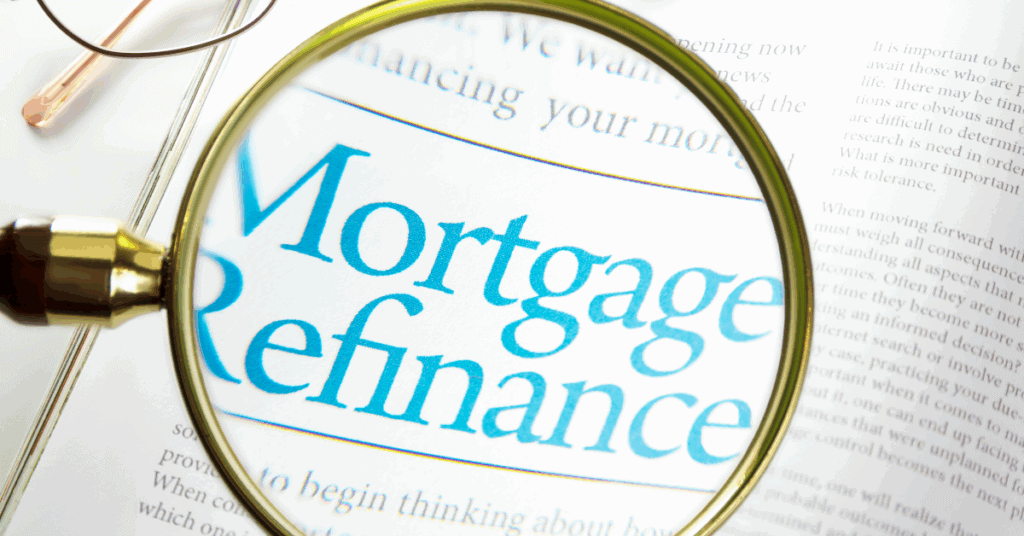Get Expert Financing
- Matched with investor-friendly lenders
- Fast pre-approvals-no W2s required
- Financing options fro rentals, BRRRR, STRs
- Scale your portfolio with confidence
You may have heard that refinancing your home can save you money in the long run.
But, you won’t know if it is the best choice for you without doing some research. If you’re considering refinancing, you’ll want to look at your personal situation and intentions.
While there are benefits to refinancing into a new loan, there are also risks. Sure, you may find yourself with a lower interest rate and lower monthly payments, but you may end up spending more on interest if you dive into a short-term loan.
If you plan on staying in your current home for many years, then a long-term loan with a low-interest rate could be appealing. However, if you plan on making a move in a few years, you may want to reconsider refinancing your mortgage.
Let’s look at the pros and cons of refinancing to give you an idea of what the best option is for you.
When you purchased your home, you likely needed a mortgage.
The money you received from your lender went to the seller to pay for your house. Since you borrowed the money, you’re then obligated to pay it back in monthly installments that covered your home, other fees, and interest rate.
A refinance means that the existing mortgage you were paying on is replaced with a new mortgage. Often, this new loan can save you money by offering you a lower interest rate than what you had before.
Your new loan will pay off what was owed on your old loan. Your monthly payment, interest rate, and loan term will change.
The refinancing process requires you to apply for a new loan and fill out the same paperwork you did when you obtained your original mortgage. It can be time-consuming and a lot of work, which is why it is up to you to determine if it’s worth it.
There are considerable benefits to refinancing a mortgage.
But, some of the pros will depend on your circumstances and goals. Some popular reasons to refinance include the following.
If your current mortgage is an adjustable-rate loan, refinancing will allow you to switch to a fixed-rate mortgage.
Adjustable-rate loans make your monthly payments less predictable as your interest rate fluctuates. Depending on the market, your payments may increase or decrease, and there is no way to predict when these changes will occur.
Switching over to a fixed-rate mortgage will guarantee that your interest rate stays the same during the entire duration of the loan. This is nice because it will make budgeting more manageable.
When you decide to refinance and get a longer loan term, it will extend your time to pay off the loan. Your monthly payments will go down because of this and could go down even more if you get a lower interest rate.
This may be more likely if your credit score has gone up since you purchased your existing mortgage. Lower payments are one of the biggest pros of refinancing.
A cash-out refinance can help you pay off debt or make improvements to your home.
Maybe you would like to build an addition to your home for a new baby on the way. You can borrow from the equity you have in your home and replace your existing mortgage with one for the new amount.
For example, if your current loan is $150,000, and your home has been valued at $250,000, that means you have $100,000 in equity. You may be able to then refinance and pull out a certain amount of that equity. In many cases, lenders require that you leave 20% of the equity in the home. In that case, you could get $50,000 cash out, meaning your new loan would be $200,000.
If you don’t need $50,000, take out less and leave yourself with some equity.
When you shorten the time you pay on a loan, you shorten the time you will pay interest, meaning you will spend less money in the long run.
Interest adds up over time and can be a large sum of money that you won’t necessarily see any return for. If you can shorten your term without increasing your interest rate, you will save yourself a lot of money.
If you can go from a 30-year loan to a 15-year loan, you will be saving yourself 15 years of interest and pay off your loan in half the time.
Imagine all of the money you can save when you no longer have a mortgage.
If you have more than one mortgage, you may want to refinance them together. Doing this will combine your mortgages into one payment, which can also lower your interest rate.
With all of the benefits of refinancing, you may wonder why everyone doesn’t do it. Unfortunately, there are a few downfalls to refinancing, depending on your situation. You will want to check out the cons before making any concrete decisions.
If your reason for refinancing is to save money, know that any savings will be long-term savings and won’t happen overnight. It is also possible that the savings will be small and not worth the hassle.
When you refinance a mortgage, you will have to apply for a new loan, provide financial information, and pay closing costs. Sometimes the amount you would spend on closing costs is close to the amount you would be saving in the end.
If your existing mortgage is a 30-year mortgage and you decide to shorten the term to 15 years, your monthly payment will increase.
Even if the new loan would give you a lower interest rate, shortening a loan term means you’re required to pay a higher monthly payment. While you may be able to handle an increase in monthly payments now, it may not be so affordable in the future.
When you consider the refinancing process and how time-consuming it can be, you may realize that the minimal savings are just not worth it.
Even if refinancing can save you a few thousand dollars down the road, it may be more beneficial to look at your current situation. If your monthly payments are low, you’re not struggling and you’re able to save, you may want to leave your existing mortgage as is.
If you refinance and take a cash-out loan, you will be taking away from the equity of your home. Equity takes time to build and is not something you want to waste. It could be one of your most significant assets.
Unless you need to use your equity, it’s best to let it continue building over time.
Depending on your goals, there may be better alternatives for you than refinancing. There are different types of loans you may want to consider.
Interest rates may be higher on equity loans, but the closing costs are lower.
When you choose to refinance your home, the closing costs are pretty high, which is why you may not save much money refinancing.
Rather than replacing your current mortgage, an equity loan will add a second mortgage payment to your monthly financial commitments.
A home equity line of credit (HELOC) can be helpful if you need to borrow cash immediately.
If you don’t have much equity in your home or have a low credit score, it may be challenging to get a HELOC, but it may be worth it if you are accepted for the loan.
Since a HELOC allows you to take out the money you need, it is an excellent option for those who need help affording ongoing home improvements.
If you have $5,000 or more in savings and want to save on your mortgage, you can put that cash toward a mortgage recast.
This money will go toward your principal, which will reduce your principal balance and the amount of interest you pay in the long run.
Your interest rate and monthly payments will remain the same until your loan is paid off, but you will have knocked off some interest that you would have paid over the life of the loan.
There are different reasons you may want to refinance your mortgage.
It’s possible you need some breathing room and have learned that refinancing can lower your interest rate and monthly payments.
With the many pros and cons to refinancing, you will want to speak with an experienced lender who can tell you if refinancing will lower your payments or help you meet your goals.
The best mortgage option will be different for each individual.
That’s why reaching out to My Perfect Mortgage can help you make the best choice.
We can offer you advice, help you explore different loan options, and match you with the perfect lender to reach your goals.
Photo by RODNAE Productions from Pexels
Our advice is based on experience in the mortgage industry and we are dedicated to helping you achieve your goal of owning a home. We may receive compensation from partner banks when you view mortgage rates listed on our website.


